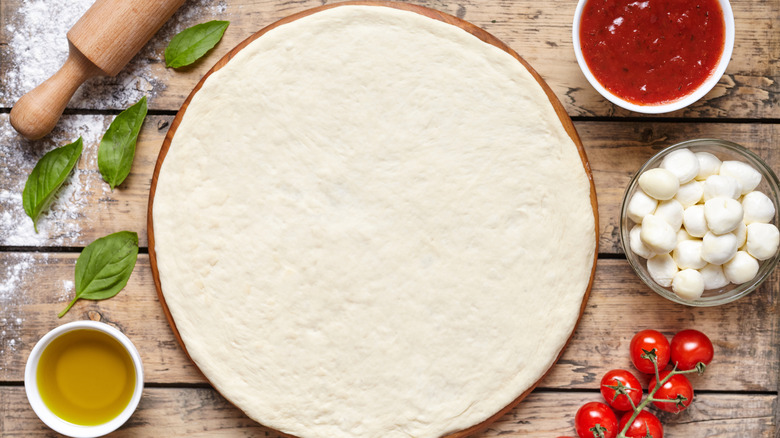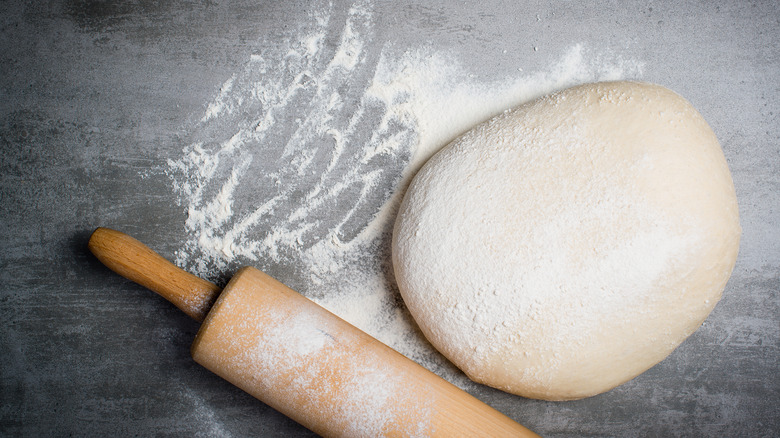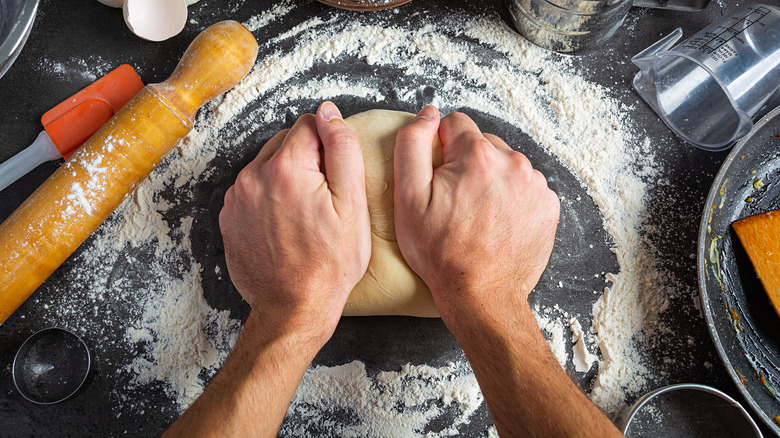A Top Tip If You're A Pizza-Making Newbie: Don't Be Afraid To Use A Rolling Pin
We may receive a commission on purchases made from links.
Homemade pizza is a food that's good for any season, any occasion, and just about any meal — yes, even breakfast pizza! If you aren't one of the thousands upon thousands of people who started making homemade pizza during the pandemic, don't worry! It's never too late to start, and pizza-making is a great skill to learn.
Ask anyone what the most important part of a pizza is and you'll hear many different answers. The crust, sauce, cheese, and toppings all come together to make a delicious dish, but getting the right recipe can take time and practice. Of course, premade sauces and pre-sliced toppings are easy to come by, but making the perfect dough for pizza crust? That one can be a little harder to master. If you are intimidated by the thought of hand-tossing pizza dough, you can use a common kitchen accessory to help you get the right dough for your pie.
Hand-stretching vs. rolling pizza dough
If you can't get your pizza dough to flatten and shape the way you want by hand, you can use a rolling pin. Some pizza purists will tell you that it's not a good idea to use a rolling pin, as it flattens the dough too much and makes it harder to get uniform thickness. It's also more difficult to shape a pizza into a round shape with a rolling pin, but that doesn't mean you can't use one, nor do you have to make round pizzas.
Pizza Companion says the choice to hand-stretch or roll the dough really depends on your crust preference. To get a thicker crust, you should stick to stretching your dough, but if you are trying to get a thinner crust, rolling it is just fine. There are even specific rolling pins designed for pizza dough. You can find many rolling pins on Amazon, and many of them come with different shapes or textures to help create the perfect crust for your pizza style.
How to use a rolling pin on pizza dough
Just like it takes practice to hand-stretch pizza dough, it also takes a little practice to properly roll the dough with a rolling pin. The dough will be sticky, so Comfortable Foods says to grease your rolling surface with olive oil. This will keep the dough from sticking to the counter, and it will help it stretch as it's rolled. According to Baking Kneads, you should dust the surface and your dough with flour to help prevent sticking.
As you roll the dough, you should apply even pressure to create even thickness in your crust. In this YouTube video by HowCast, the chef rolls the pin from the center of the dough to the edge, then turns the dough and rolls it again. He repeats this process until the dough is stretched and shaped the way he wants it. Do not roll the pin back and forth over the dough, because that can cause the dough to flatten in the center and then become so thin that it tears.


